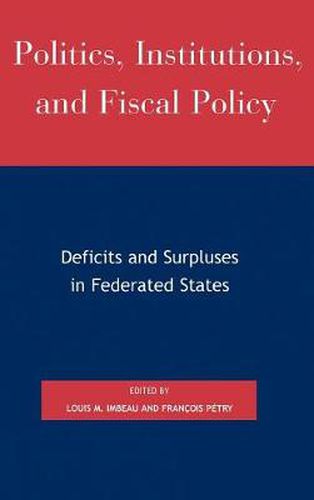Readings Newsletter
Become a Readings Member to make your shopping experience even easier.
Sign in or sign up for free!
You’re not far away from qualifying for FREE standard shipping within Australia
You’ve qualified for FREE standard shipping within Australia
The cart is loading…






Why, in the last decades of the twentieth century, did industralized nations witness recurring vast public deficits, even in times of peaceful international relations and economic growth? The essays in Politics, Institutions, and Fiscal Policy chart answers sought by economists, political scientists, and government officials. This groundbreaking book looks at states within five industrialized federations-Canadian provinces, Swiss cantons, Belgian regions, German lander, and American states-as case studies of variation in budget balances since 1980. The work’s conclusion compares deficit levels between the federations studied. Politics, Institutions, and Fiscal Policy sheds new light on the role of such factors as spending and taxation levels and electoral and partisan cycles within the budget balancing process. Neatly written and theoretically grounded, this volume contributes greatly to our understanding of public finance and public administration.
$9.00 standard shipping within Australia
FREE standard shipping within Australia for orders over $100.00
Express & International shipping calculated at checkout
Why, in the last decades of the twentieth century, did industralized nations witness recurring vast public deficits, even in times of peaceful international relations and economic growth? The essays in Politics, Institutions, and Fiscal Policy chart answers sought by economists, political scientists, and government officials. This groundbreaking book looks at states within five industrialized federations-Canadian provinces, Swiss cantons, Belgian regions, German lander, and American states-as case studies of variation in budget balances since 1980. The work’s conclusion compares deficit levels between the federations studied. Politics, Institutions, and Fiscal Policy sheds new light on the role of such factors as spending and taxation levels and electoral and partisan cycles within the budget balancing process. Neatly written and theoretically grounded, this volume contributes greatly to our understanding of public finance and public administration.